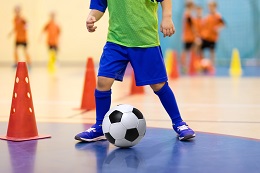March 29 2019
 Ahead of World Autism Awareness Day on April 2, researchers from the University of South Australia are turning autism interventions on their head with a stand-out sports program that's training coaches how to best achieve results for students with autism.
Ahead of World Autism Awareness Day on April 2, researchers from the University of South Australia are turning autism interventions on their head with a stand-out sports program that's training coaches how to best achieve results for students with autism.
Supporting Success is a school-based multi-sports program designed to help children with autism develop important life skills via regular organised sports. Yet it does so by focusing on the child's environment instead of directing the intervention to the child itself.
UniSA researcher, Emma Milanese says Supporting Success is unique in that it provides important first-line interventions and training for coaches as a means for helping children with autism.
"Coaches play a paramount role in providing the 'right' environment for students with autism to enjoy and participate in sport, yet the challenge is that they often feel unprepared to work in special settings.
"Our research shows that there are specific tactics that coaches can use to encourage students with autism to more effectively participate in sports and physical activities.
"These include using visual cards to communicate; demonstrating activities before students have a go; using distinct coaching aids to familiarise students with sports equipment; and various approaches for overcoming individual sensory challenges.
"We're very pleased to hear that both parents and teachers are reporting great improvements in physical and interpersonal skills, concentration, and general calmness, as well as increased interests in new experiences, new friendships, and a general feeling of being more connected with the environment and community."






